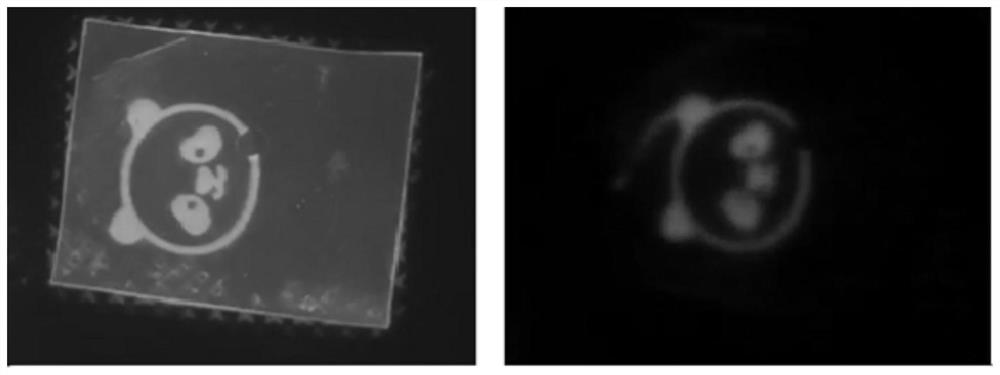A time-sensitive room temperature phosphorescent anti-counterfeiting material and its preparation method and application
A room-temperature phosphorescent and time-sensitive technology, which is applied in the direction of luminescent materials, chemical instruments and methods, etc., can solve the problems of high cost, inconvenient use, and uncontrollable phosphorescence intensity and timeliness, and achieve the effect of low cost and easy processing
- Summary
- Abstract
- Description
- Claims
- Application Information
AI Technical Summary
Problems solved by technology
Method used
Image
Examples
Embodiment 1
[0037] 1. A method for preparing a time-sensitive room temperature phosphorescent anti-counterfeiting material, comprising the following steps:
[0038] Prepared by solution molding method, acridone and water-absorbing polymer polyacrylamide are dissolved in solvent water, the mass ratio of acridone and polyacrylamide is controlled to be 1:4000, and the mass fraction of acridone solution is 0.1%. , and then heated and evaporated at 100°C to remove the solvent water to obtain a time-sensitive room temperature phosphorescent anti-counterfeiting material. Such as figure 1 As shown, the room-temperature phosphorescent anti-counterfeiting material exhibits blue fluorescence under ultraviolet light, and a long-lived green phosphorescence appears after the light is turned off, and the room-temperature phosphorescent anti-counterfeiting material will gradually lose phosphorescence when exposed to air with a relative humidity of 50%. The purpose of effective screening is the real fact...
Embodiment 2
[0040] 1. A method for preparing a time-sensitive room temperature phosphorescent anti-counterfeiting material, comprising the following steps:
[0041] Prepared by solution swelling method, dissolving acriflavine hydrochloride in water to form an aqueous solution of acriflavine hydrochloride with a mass fraction of 0.03%, using a water-absorbing polymer polyacrylamide film as a substrate, and acriflavine Hydrochloride aqueous solution is used as ink for inkjet printing; after printing out the pattern, dry the pattern at 90°C for 1 hour, and then seal it with plastic to form a pattern such as figure 2 The green fluorescence-green phosphorescence pattern shown. When the sealed bag is opened, the phosphorescent properties will gradually disappear within 2 hours, and the fluorescent properties will not change significantly, achieving the anti-counterfeiting goal of identifying whether the product packaging has been opened.
Embodiment 3
[0043] 1. A method for preparing a time-sensitive room temperature phosphorescent anti-counterfeiting material, comprising the following steps:
[0044]Prepared by solution swelling method, dissolving acriflavine hydrochloride in water to form an aqueous solution of acriflavine hydrochloride with a mass fraction of 0.01%, using a water-absorbing polymer polyacrylamide film as a substrate, and acriflavine The aqueous hydrochloride solution was used as the ink for inkjet printing; after the pattern was printed, the pattern was dried at 90°C for 1 hour, and sealed with plastic to form a pattern such as figure 2 The green fluorescence-green phosphorescence pattern shown. After the sealed bag is opened, the phosphorescent properties will gradually disappear within 2 to 3 hours, while the fluorescent properties will not change significantly.
PUM
| Property | Measurement | Unit |
|---|---|---|
| thickness | aaaaa | aaaaa |
Abstract
Description
Claims
Application Information
 Login to View More
Login to View More - R&D
- Intellectual Property
- Life Sciences
- Materials
- Tech Scout
- Unparalleled Data Quality
- Higher Quality Content
- 60% Fewer Hallucinations
Browse by: Latest US Patents, China's latest patents, Technical Efficacy Thesaurus, Application Domain, Technology Topic, Popular Technical Reports.
© 2025 PatSnap. All rights reserved.Legal|Privacy policy|Modern Slavery Act Transparency Statement|Sitemap|About US| Contact US: help@patsnap.com


